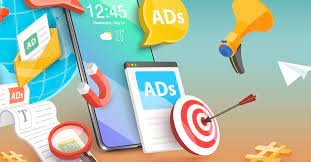Scroll through any social feed and you’ll notice something strange: most ads look like slightly louder versions of organic posts. That’s no accident—many brands still build campaigns in the same drag‑and‑drop editors they use for birthday party invites. The result? Nice‑looking visuals that never quite earn their keep.
A savvy creative strategist knows there’s a world of difference between “pretty graphics” and performance‑driven ads. Below, we’ll unpack why traditional design suites plateau, how AI‑first platforms close the gap, and what to look for when upgrading your creative stack.
The Limits of One‑Size‑Fits‑All Design Software
Traditional editors—think Canva, PowerPoint, or the old faithful Adobe duo—excel at broad tasks: flyers, social banners, maybe a snappy infographic. But ads demand fast iteration, data feedback, and channel‑specific tweaks that generic tools simply weren’t built for.
Three common pain points:
- Manual Guesswork
You eyeball color palettes and headline hierarchies instead of letting conversion data guide you. - Template Tunnel Vision
Stock layouts are optimized for aesthetics, not CTR. Swapping background photos rarely changes performance. - Slow Test Cycles
Export → upload → wait for results → redesign. By the time insights roll in, your audience has moved on to the next trend.
Ads Aren’t Posters: The Metrics That Matter
Effective creative answers three questions in under two seconds: Who is this for? Why should they care? What should they do next? Generic tools help with the first (branding) but struggle with the latter two (relevance and action).
- Relevance relies on contextual language, industry jargon, and sometimes micro‑targeted visuals.
- Action hinges on well‑positioned CTAs, urgency cues, and design elements proven to nudge clicks.
Without built‑in ad intelligence—performance scores, heat‑map predictions, and industry benchmarks—you’re flying on gut feel.
How AI‑First Platforms Raise the Bar
Purpose‑built ad creators layer machine learning over intuitive editors, turning every design tweak into a measurable experiment.
- Instant Performance Scoring
Upload a draft and get an AI grade on predicted CTR, CPM, even ROAS impact. It’s like having a media buyer whispering over your shoulder. - Industry‑Specific Templates
Instead of generic “Sale!” banners, you get layouts fine‑tuned for SaaS free trials, DTC fashion drops, or B2B lead magnets. Copy blocks and color accents adjust to best‑practice patterns for that niche. - Script Generation on Tap
Need a punchy opening line for IT managers? Feed the tool your offer; it spits back three variations A/B‑tested across similar campaigns. - Massive Ad Libraries for Swipe‑able Insights
With access to 10 million examples—including deep analytics pulled from the you can reverse‑engineer trending hooks without doom‑scrolling for hours.
Mini Case Study: Beating Banner Blindness in Beauty E‑Commerce
A cruelty‑free cosmetics startup leaned on a generic design tool for months, shipping pastel carousels that blended into every influencer feed. Click‑throughs hovered under 0.8 %.
Switching to an AI ad platform, the team:
- Ran performance scoring on their best‑looking creative (rated a disappointing 42/100).
- Pulled high‑performing skincare ads from the library; noticed clean ingredient callouts and bolder contrast.
- Used the platform’s “ingredient‑first” template to highlight niacinamide in frame #1.
- A/B‑tested three CTA variants generated by the script engine.
Result: CTR jumped to 2.5 %, CPA dropped 31 %, and the brand finally cracked paid social profitability.
Integrating AI Tools into Your Existing Workflow
- Audit Your Creative Backlog
Flag ads with low CTR or high CPM; these are prime candidates for re‑work. - Set Guardrails
Lock brand fonts, HEX codes, and tone guidelines so AI variations stay on‑brand. - Batch Generate
Produce 5–10 versions per asset in one sitting—headline flips, color inversions, dynamic image swaps. - Launch Micro Budgets
Spend lightly at first; AI scoring isn’t gospel. Real‑world data still rules. - Promote the Winners
Once a version beats your control by a meaningful margin (e.g., 15 %+ CTR uplift), scale spend and roll learnings into the next creative round.
Checklist: Signs You’ve Outgrown Generic Design Tools
- You rely on spreadsheets to track which image‑headline pairs performed best last quarter.
- Your designers spend more time exporting sizes than concepting.
- Stakeholders ask “Why did this ad win?” and the only answer is a shrug emoji.
- Creative fatigue kicks in after two weeks because fresh variations take days, not minutes.
If three or more ring true, an AI‑powered ad creator isn’t a luxury—it’s table stakes.
Looking Ahead: The Future of Data‑Driven Creative
Soon, expect real‑time ad personalization where a single master file morphs copy, imagery, and offers based on viewer data. AI voiceovers will auto‑translate dialects, and predictive models will pre‑bid on media placements before you’ve finalized the creative concept.
But the fundamentals won’t change: clarity, relevance, and a compelling nudge to act. A smarter toolset just means you’ll hit those fundamentals faster, iterate more often, and waste less budget on pretty designs that don’t convert.
Traditional design software will always have a place—brand books, social memes, your CEO’s birthday card. When it comes to revenue‑driving ads, though, purpose‑built AI platforms shift you from “making graphics” to “engineering outcomes.” And in the attention economy, that’s the difference between hitting spend limits and hitting growth goals.

